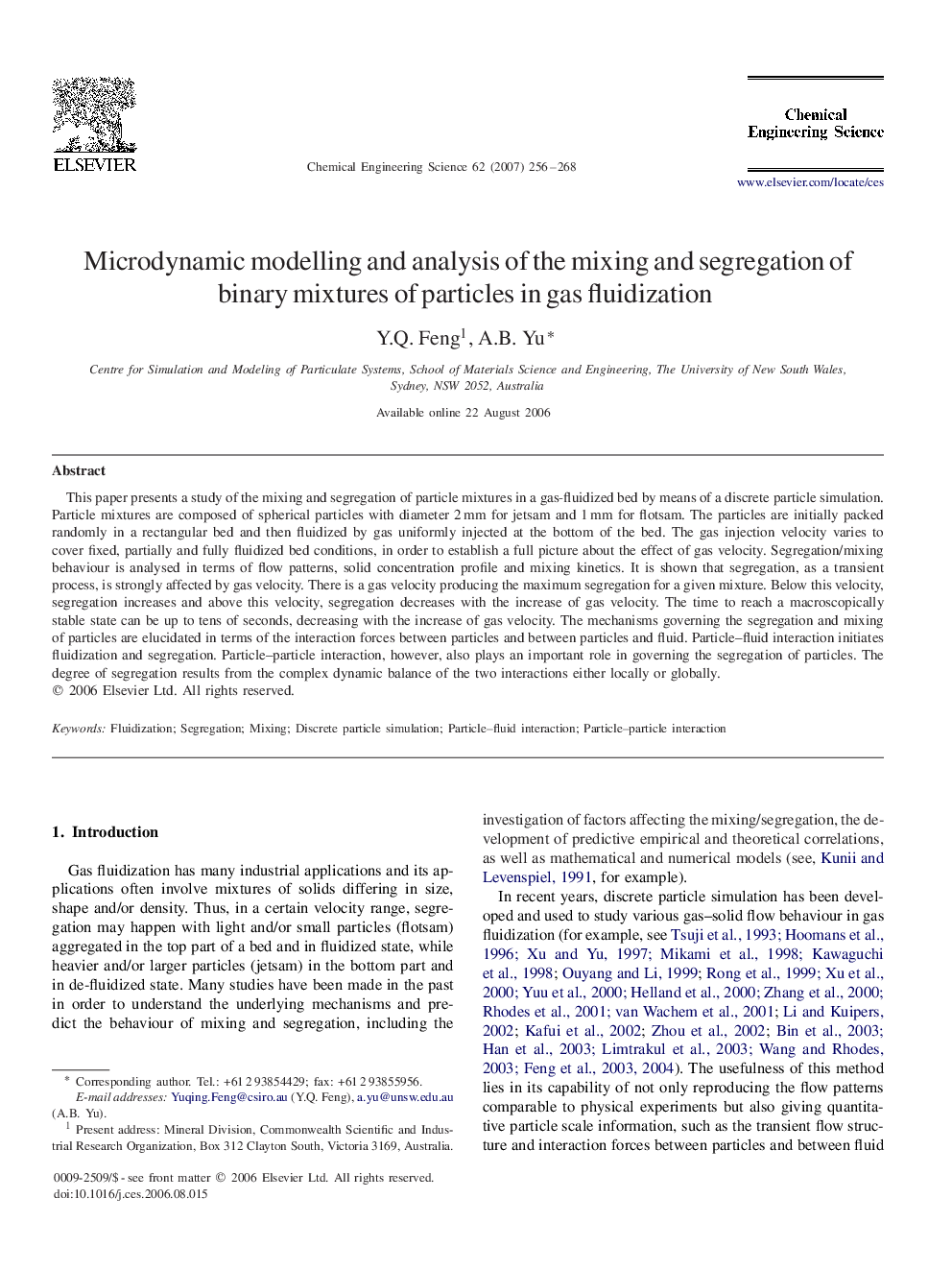| Article ID | Journal | Published Year | Pages | File Type |
|---|---|---|---|---|
| 160359 | Chemical Engineering Science | 2007 | 13 Pages |
This paper presents a study of the mixing and segregation of particle mixtures in a gas-fluidized bed by means of a discrete particle simulation. Particle mixtures are composed of spherical particles with diameter 2 mm for jetsam and 1 mm for flotsam. The particles are initially packed randomly in a rectangular bed and then fluidized by gas uniformly injected at the bottom of the bed. The gas injection velocity varies to cover fixed, partially and fully fluidized bed conditions, in order to establish a full picture about the effect of gas velocity. Segregation/mixing behaviour is analysed in terms of flow patterns, solid concentration profile and mixing kinetics. It is shown that segregation, as a transient process, is strongly affected by gas velocity. There is a gas velocity producing the maximum segregation for a given mixture. Below this velocity, segregation increases and above this velocity, segregation decreases with the increase of gas velocity. The time to reach a macroscopically stable state can be up to tens of seconds, decreasing with the increase of gas velocity. The mechanisms governing the segregation and mixing of particles are elucidated in terms of the interaction forces between particles and between particles and fluid. Particle–fluid interaction initiates fluidization and segregation. Particle–particle interaction, however, also plays an important role in governing the segregation of particles. The degree of segregation results from the complex dynamic balance of the two interactions either locally or globally.
